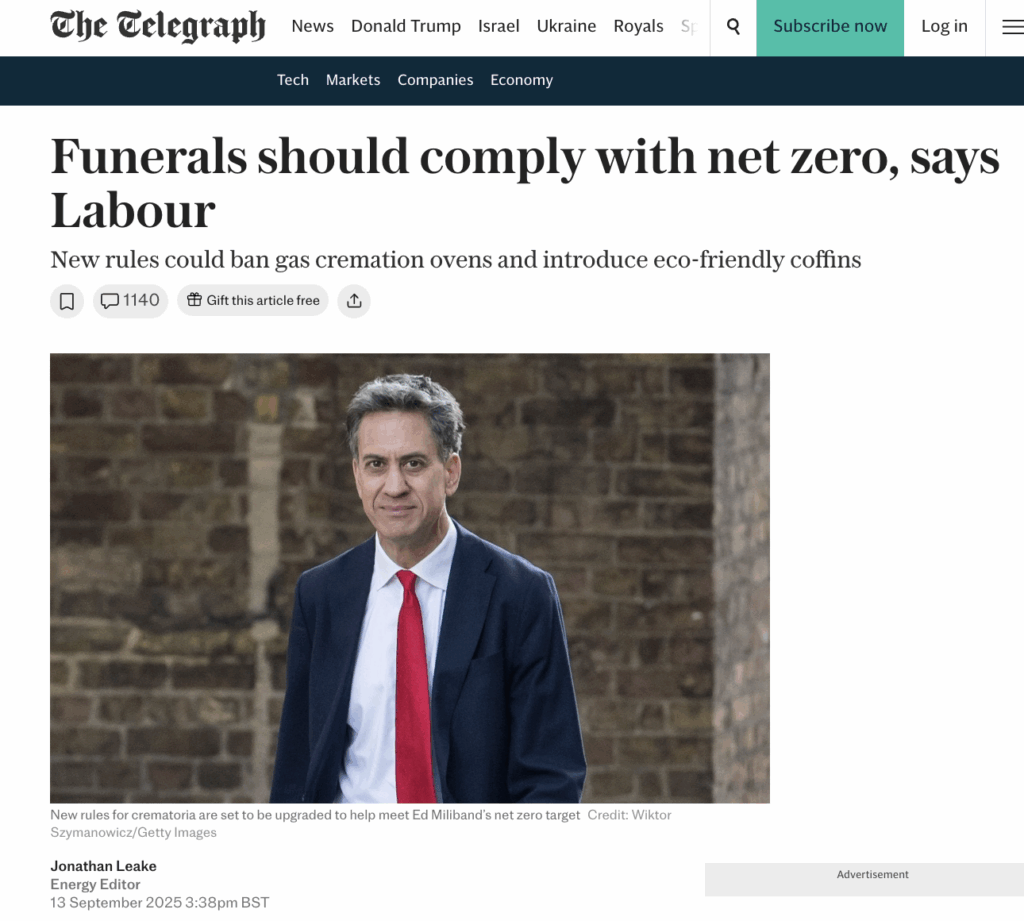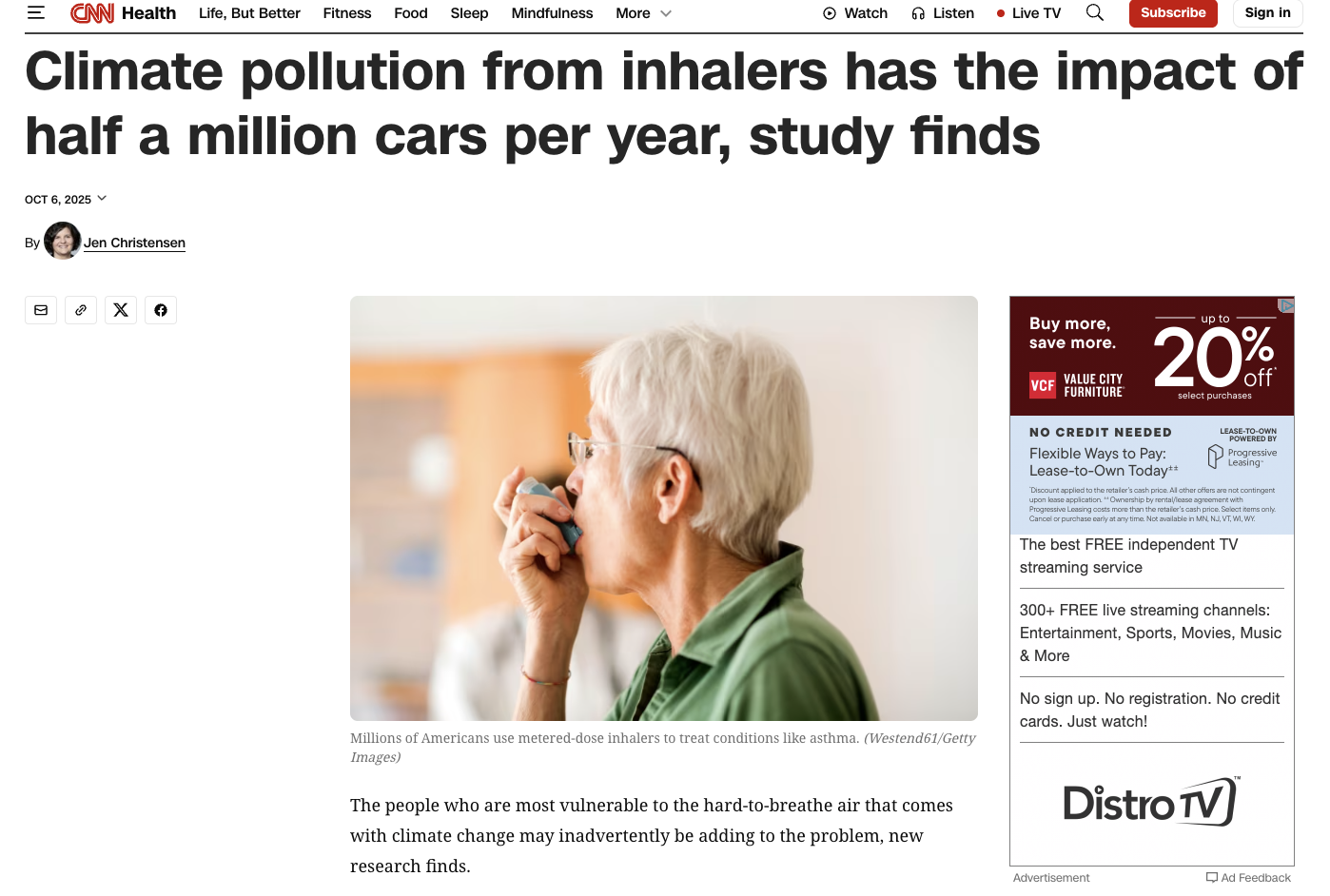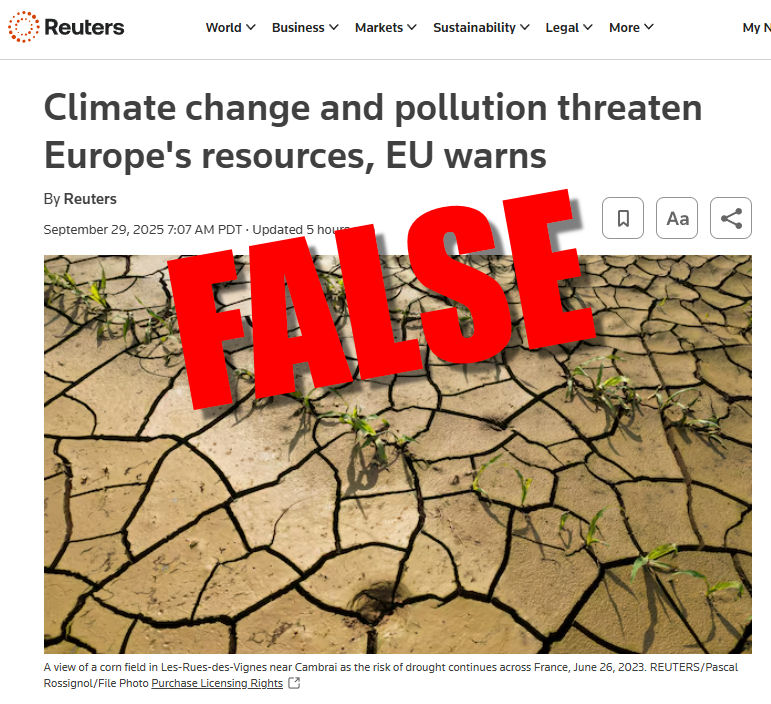https://www.telegraph.co.uk/business/2025/09/13/funerals-comply-net-zero-labour/ (link)
Jonathan Leake -Energy Editor
Labour is plotting to make UK crematoria greener by banning gas cremation ovens and forcing grieving families to choose eco-friendly wicker or bamboo coffins.
New rules for crematoria, drawn up by the UK environment department, are set to be upgraded to meet both new pollution standards and the UK’s commitment to reach the target of net zero by 2050 championed by Energy Secretary, Ed Miliband.
Under the plan, the Government will seek to cut emissions of greenhouse gases and other pollutants, including mercury from dental fillings, and airborne toxins from burning coffin glue and embalming fluid.
Draft rules also suggest crematoria burn bodies one after another, with no gap to retain heat and save on gas – a tough target for an industry that relies almost entirely on gas-fired ovens.
The rules are based on consultations by the Department for Environment, Food & Rural Affairs (Defra), with the industry dating back several years. It will be the first update since 2012.
The delays in publication are partly because such proposals are regarded as highly sensitive. Successive environment secretaries were reluctant to publish them in the aftermath of the Covid pandemic or close to any elections.
However, they are understood to have now been signed off by senior officials who have also briefed the funeral industry’s trade bodies.
At the heart of the proposals is the need to cut emissions, with a long-term aim of moving away from gas-fired cremations to using electricity from wind or solar farms or finding other low carbon fuels.
Defra makes clear that the burning coffin and corpse will still generate emissions even if powered by green electricity.
There is, however, a downside to cremations powered by electricity which is that they take much longer. Cremations in gas ovens “range from as little as 50 minutes to more than 2 hours, depending upon body size”, but “cremation times on electric cremators are longer”, the guidelines warn.
Industry estimates suggest that cremating a large corpse would take up to three hours in a crematorium powered by low carbon electricity – twice as long as with gas.
Richard Barradell, of the Association of Private Crematoria and Cemeteries (APCC), said: “We have a lot of ageing crematoria that need replacing or upgrading, but we can’t build them because the rules around emissions and operations have not been published so we don’t know the specifications.”
Mike Birkinshaw, of the Federation of Burial and Cremation Authorities, said: “The UK cremation sector supports achieving the lowest possible environmental impact. Net zero remains the ambition and we are committed to supporting our members in this important work.”
The costs could however be huge. Mr Birkinshaw estimates it will cost the industry £18m or £55,000 for each crematorium, just to fit equipment to remove nitrous oxides
Cremation has become by far the commonest approach to death. Of the 662,000 deaths recorded across the UK in 2023, about 80pc resulted in cremations.
The new rules will also see crematoria obliged to measure all the energy used and emissions generated, and encouraged to recover heat from the combustion chambers – suggesting it could be used to generate electricity or provide hot water.
…
BEYOND PARODY: “Labour is plotting to make UK crematoria greener by banning gas cremation ovens and forcing grieving families to choose eco-friendly wicker or bamboo coffins…”
The “environmental movement” truly is a climate cult. pic.twitter.com/NqCvZX2mgL
— Steve Guest (@SteveGuest) September 14, 2025





